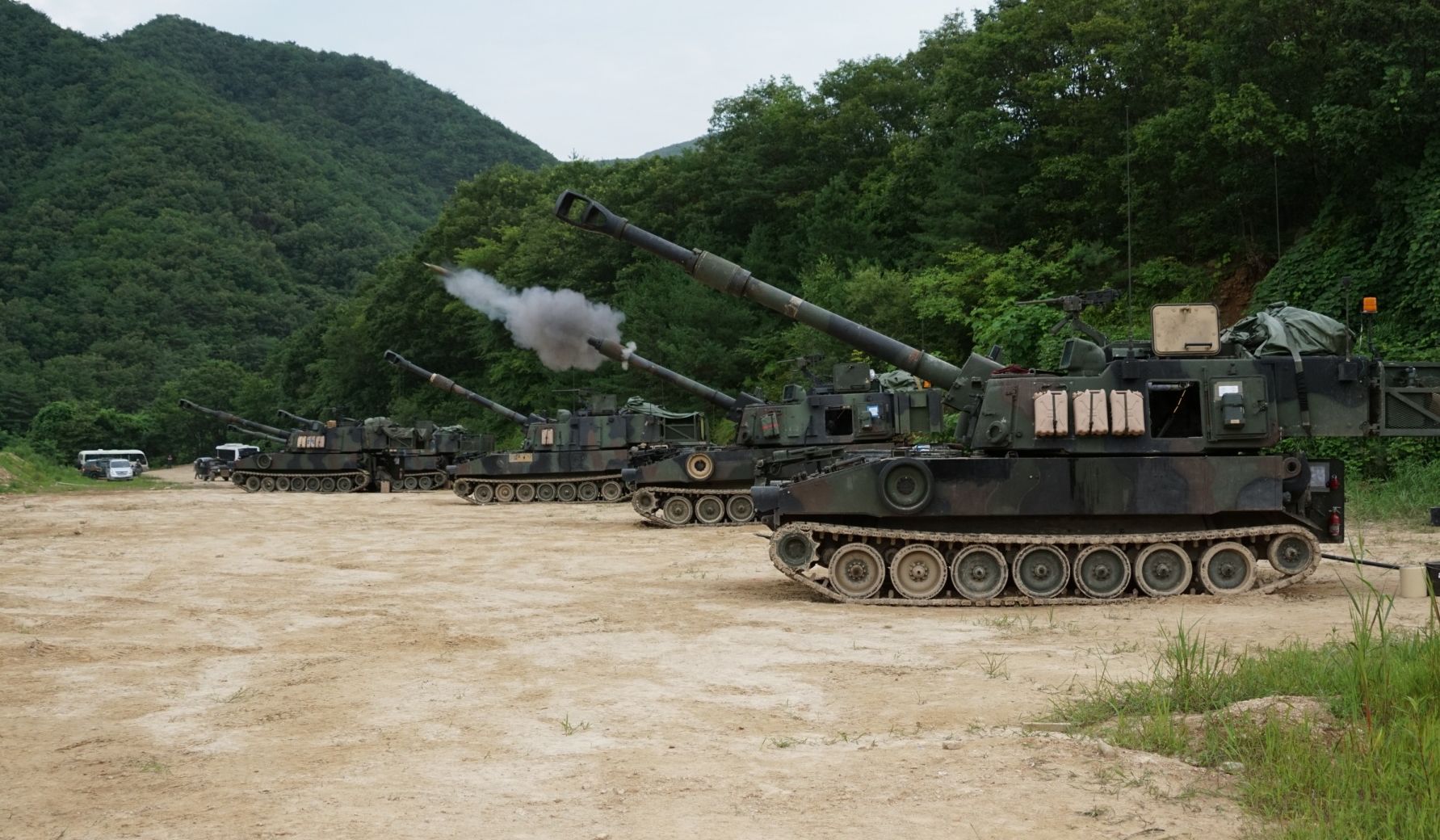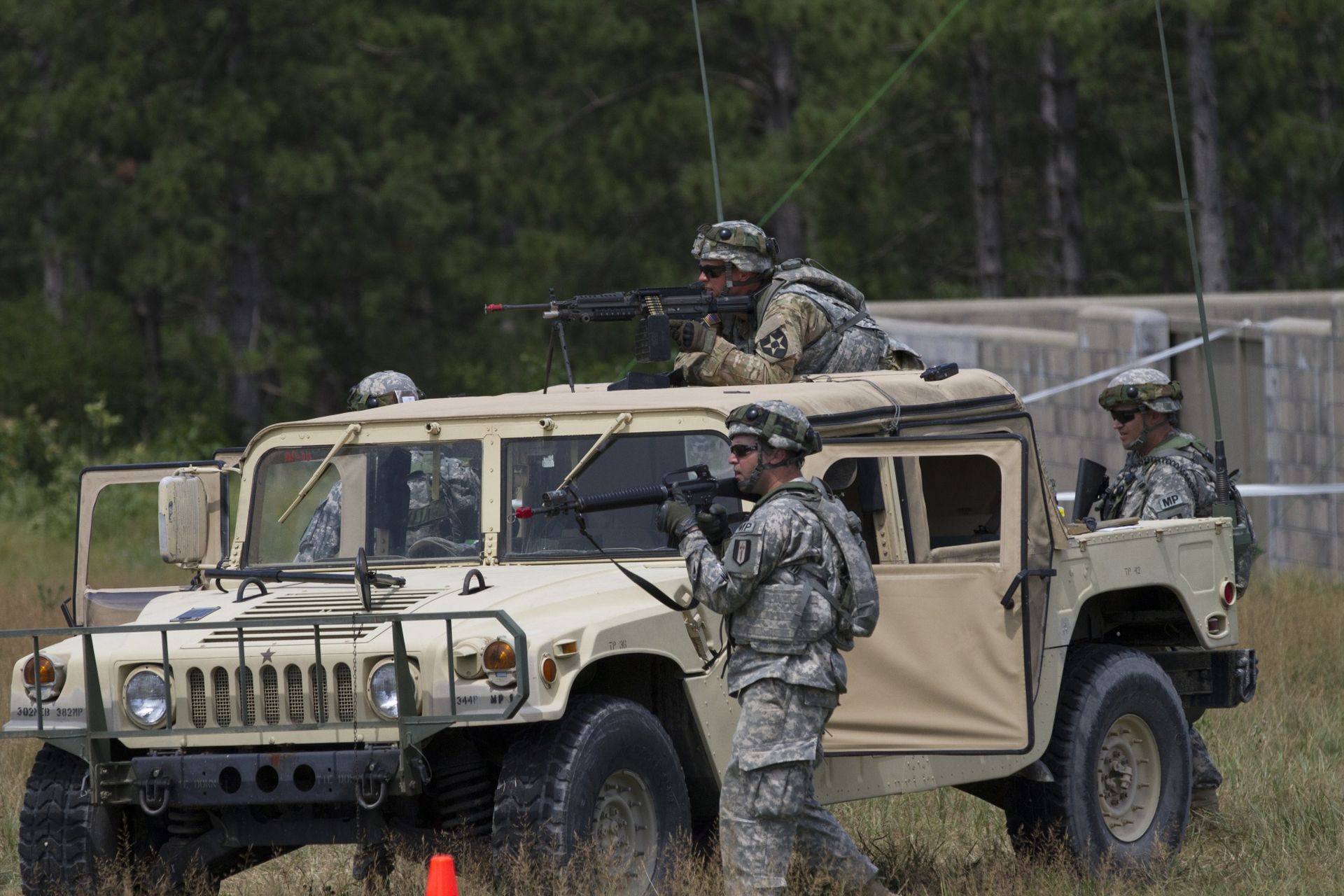Artillery Soldiers got the opportunity to cross-train on other jobs inside their M109A6 Paladin self-propelled howitzers, during a recent “jump crew” training.
During the live fire exercise, Soldiers from Battery B, 1st Battalion, 82nd Field Artillery Regiment worked with South Korean partners at Nightmare Range, near Topyong-ri, South Korea. The purpose of the exercise, which lasted from July 19 to 21, was to certify backup “jump” crews for the battery’s guns and fire direction centers.
Ensuring multiple people are certified in different positions not only provides for contingency manning options in a combat situation, but it also allows crew members to acquire experience beyond their assigned positions that could benefit them later in their careers.
“It’s been a really eye-opening experience,” said Spc. Andrekkius Belyue, an advanced field artillery tactical data system operator.
“Normally, fire direction chief is a staff sergeant’s position, but due to my experience and knowledge, I was selected to certify as the backup (fire direction chief). This experience will serve me well down the road when I take over my own section.”
From the start, the 1-82 FA worked closely with staff from the South Korean Army and members of the Pocheon Police Department to ensure the safety of the event and minimize disruption to the community. It had been more than a year since South Korea last used the firing point in a joint live fire exercise with the U.S.
More than 300 Korean police officers aided in Bravo Battery’s movement to the firing point by setting up road blocks and providing vehicle escorts. On the first day of the live fire, the 1-82 FA invited community leaders up to the firing point and outfitted them with hearing protection so they could observe the fires.
Also present at the firing point during the exercise were officers and noncommissioned officers from the Republic of Korea Army V Corps Artillery. These officers and noncommissioned officers served in an oversight capacity, double-checking firing data and crew drills.
On the final day of the exercise, Republic of Korea Army 8th Division Artillery Soldiers were invited to the firing point to observe the fires and interact with the U.S. Soldiers. The 8th Division, one of the farthest forward units in the South Korean Army, is posted near the firing point.
“They are very proud to be artillerymen,” observed Col. Sung Kyun Kang, commander of the Republic of Korea Army 8th Division Artillery. During the exercise, Kang was invited into one of the guns to “pull lanyard” and fire a round.
“They are ready to fire when they need to, in any condition, and (they) understand that they have one of the most important missions should war begin.”
Following the live fire, the commanders of 1-82 FA and the 210th Field Artillery Brigade met with Kang to discuss the importance of combined training.
“We thoroughly enjoy everything we do with our (South Korean) counterparts,” said Col. Christopher Taylor, commander of the 210th FA Brigade. “The way we look at it is that if we are going to go to war with them, then we need to train with them, too.”
Lt. Col. Douglas Hayes, commander, 1-82 FA, has made partnered training with South Korean Army units a priority. This live fire continues 1-82’s ongoing effort of partnering with the country’s Army and using its training facilities, he said.
Two months ago, 1-82 partnered with the Republic of Korea 26th Mechanized Infantry Division Artillery in one of the largest artillery live fires in recent memory, featuring artillery batteries from four separate Republic of Korea Army Field Artillery battalions.
“This week’s exercise is yet another great example of (South Korean and U.S.) cooperation and partnership.” said Hayes.
“To execute a live fire on a (South Korean) training site, and to have key leaders from the Republic of Korea Army V Corps and 8th Division observing our tactics, techniques, and procedures to better understand how we fight shows a level of commitment seldom achieved.”











